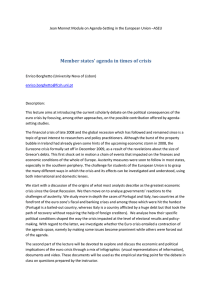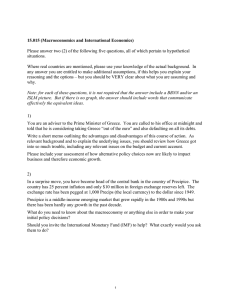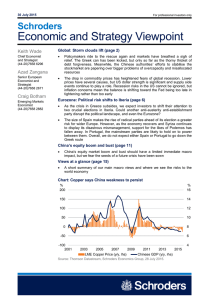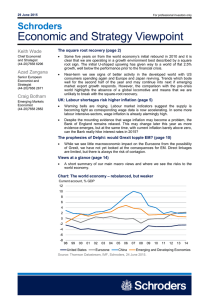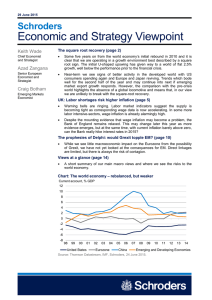15.015, class #9: Crisis in the Eurozone
advertisement
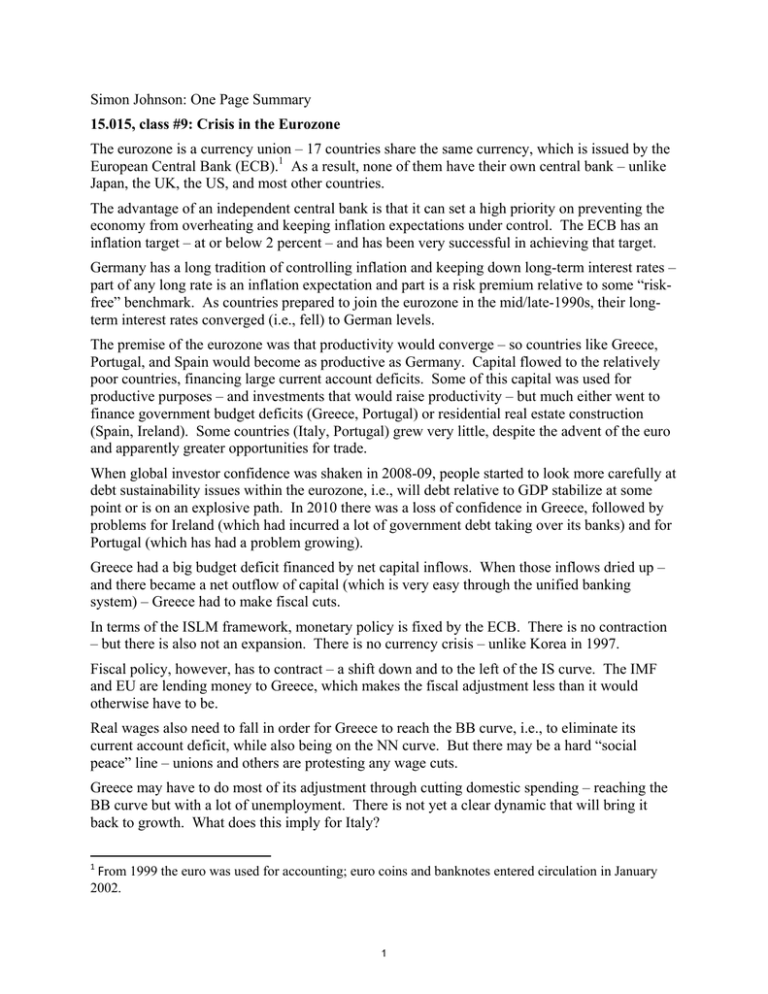
Simon Johnson: One Page Summary 15.015, class #9: Crisis in the Eurozone The eurozone is a currency union – 17 countries share the same currency, which is issued by the European Central Bank (ECB).1 As a result, none of them have their own central bank – unlike Japan, the UK, the US, and most other countries. The advantage of an independent central bank is that it can set a high priority on preventing the economy from overheating and keeping inflation expectations under control. The ECB has an inflation target – at or below 2 percent – and has been very successful in achieving that target. Germany has a long tradition of controlling inflation and keeping down long-term interest rates – part of any long rate is an inflation expectation and part is a risk premium relative to some “riskfree” benchmark. As countries prepared to join the eurozone in the mid/late-1990s, their longterm interest rates converged (i.e., fell) to German levels. The premise of the eurozone was that productivity would converge – so countries like Greece, Portugal, and Spain would become as productive as Germany. Capital flowed to the relatively poor countries, financing large current account deficits. Some of this capital was used for productive purposes – and investments that would raise productivity – but much either went to finance government budget deficits (Greece, Portugal) or residential real estate construction (Spain, Ireland). Some countries (Italy, Portugal) grew very little, despite the advent of the euro and apparently greater opportunities for trade. When global investor confidence was shaken in 2008-09, people started to look more carefully at debt sustainability issues within the eurozone, i.e., will debt relative to GDP stabilize at some point or is on an explosive path. In 2010 there was a loss of confidence in Greece, followed by problems for Ireland (which had incurred a lot of government debt taking over its banks) and for Portugal (which has had a problem growing). Greece had a big budget deficit financed by net capital inflows. When those inflows dried up – and there became a net outflow of capital (which is very easy through the unified banking system) – Greece had to make fiscal cuts. In terms of the ISLM framework, monetary policy is fixed by the ECB. There is no contraction – but there is also not an expansion. There is no currency crisis – unlike Korea in 1997. Fiscal policy, however, has to contract – a shift down and to the left of the IS curve. The IMF and EU are lending money to Greece, which makes the fiscal adjustment less than it would otherwise have to be. Real wages also need to fall in order for Greece to reach the BB curve, i.e., to eliminate its current account deficit, while also being on the NN curve. But there may be a hard “social peace” line – unions and others are protesting any wage cuts. Greece may have to do most of its adjustment through cutting domestic spending – reaching the BB curve but with a lot of unemployment. There is not yet a clear dynamic that will bring it back to growth. What does this imply for Italy? 1 From 1999 the euro was used for accounting; euro coins and banknotes entered circulation in January 2002. 1 MIT OpenCourseWare http://ocw.mit.edu 15.015 Macro and International Economics Fall 2011 For information about citing these materials or our Terms of Use, visit: http://ocw.mit.edu/terms. 2




